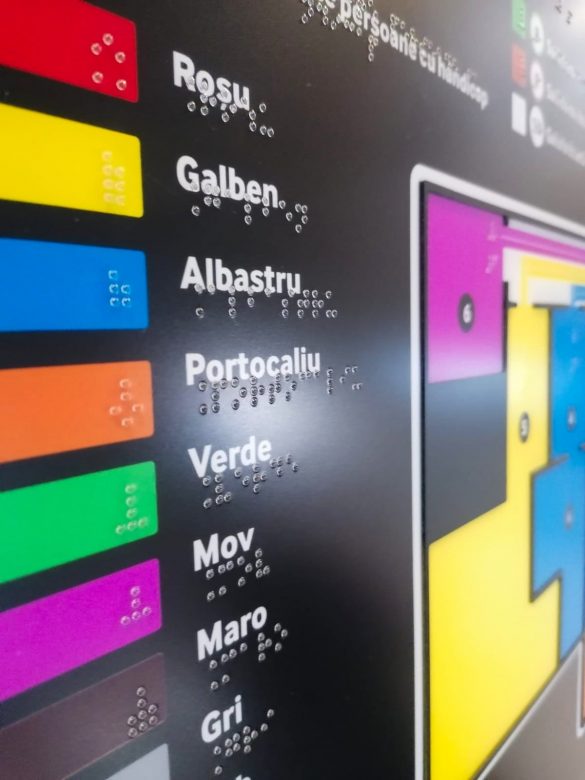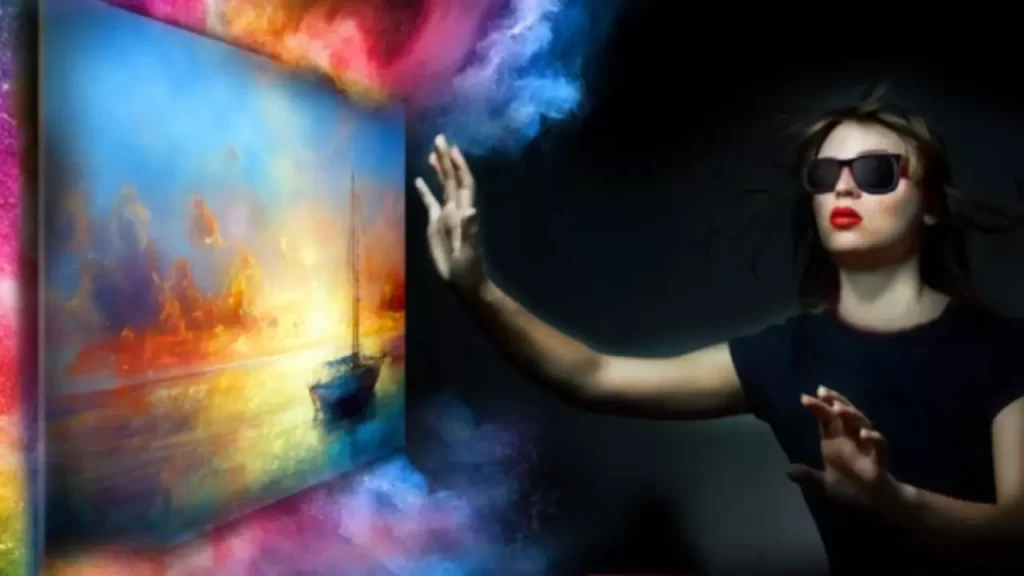With the help of the tactile Alphabet created by Tudor Scripor from Cluj, visually impaired individuals can distinguish the colors of clothing and even solve the Rubik’s Cube.
The award ceremony will take place in Warsaw during the international conference REHA for the Blind, from September 10th to 13th. Tudor Scripor’s project was awarded the gold medal at the International Exhibition of Inventions and Innovations in Geneva in 2019, and now it has been nominated for World Idol 2021, an international competition organized by the Chance for the Blind Foundation.
Tudor Paul Scripor has invented a tactile-graphic representation of colors using symbols. The Scripor Alphabet effectively transforms a disability into a true super-ability that provides visually impaired, low vision, or color-blind individuals with a real chance at a fulfilling life.
With the help of the Scripor Alphabet, visually impaired individuals can more easily find employment in previously inaccessible fields such as food, sports, technology, or education.
Tudor Scripor explains that his invention is not only for those who were born blind but also for those who have gradually lost their vision.
“The idea came to me during a workshop attended by a visually impaired student. He gave me negative feedback, reproaching me for not making him understand colors. Now we are developing products and services that include this standardization together with visually impaired individuals. It’s about an alphabet of colors. (…)
This alphabet is an extension of the Braille alphabet. It is used for writing and reading by visually impaired individuals. It can be used to write numbers, letters, punctuation marks, diacritics, and even musical notes. But there is no common language for colors. For example, to write the word ‘blue,’ you have to write all the characters that make up the word. With the help of the tactile alphabet, the entire word is reduced to a single symbol, making it a universal alphabet,” explained Tudor Scripor, a specialist in art, restoration, and icon painting, to serviscluj.ro.
According to statistics provided by the European Blind Union, there are over 100,000 blind people in our country and approximately 30 million in Europe.
“My nomination, along with that of the NGO ‘Scripor Alphabet Association,’ came in the ‘Organization of the Year 2021’ category, as well as for four products that include the tactile-graphic system for visually impaired individuals, in the ‘Product of the Year 2021’ category. This news confirms the work and efforts of nearly 10 years aimed at improving the quality of life and providing equal opportunities to visually impaired individuals worldwide through the color standardization of the Scripor Alphabet. The Tactile Alphabet of Colors,” wrote Tudor Scripor on his Facebook page.
The four products that include the Scripor tactile-graphic system are: the learning manual for the tactile alphabet of colors, the tactile map of the Marghita Cultural House, the accessible Rubik’s Cube, and the fashion application, announced the artist from Cluj.
How the Scripor Alphabet of Colors works
The Scripor Alphabet can be learned in just a few hours, according to its inventor, compared to the Braille alphabet, which takes one or even two years to learn. At the same time, to learn the Alphabet of Colors, it is not necessary to know the Braille alphabet.
The Scripor Alphabet – of colors – is composed of the colors yellow, red, blue, orange, green, brown, violet, white, black, and gray, but it can also represent lighter shades of colors.

Tudor Scripor also explained how this is possible.
“For example, pink is a lighter shade of red. Next to the red color cell is the white color cell, and through two touches, a visually impaired person knows that it is pink,” said Scripor, according to servuscluj.ro.
An embossing printer pushes the paper and creates reliefs of the alphabet, the inventor further explained.
“For example, on medication boxes, there are certain dots. Those dots are part of the Braille alphabet. The color alphabet is of the same size and distance between dots as Braille. The major difference between them is the orientation point. When visually impaired individuals recognize that it is that specific point, they know that they have the alphabet of colors in front of them,” Scripor added.
The Cluj-based inventor has also created four products for visually impaired individuals, including a color recognition application and the accessible Rubik’s Cube.

